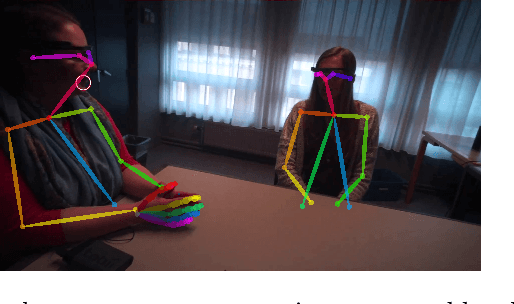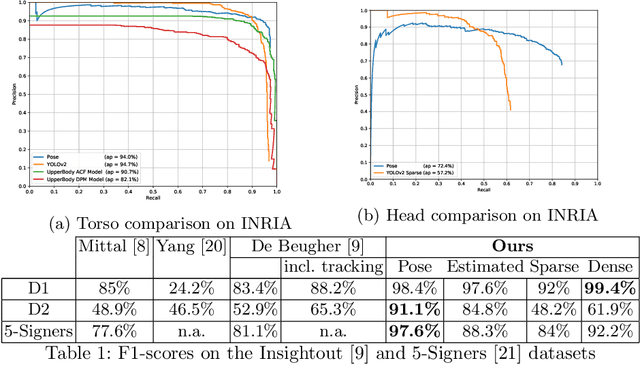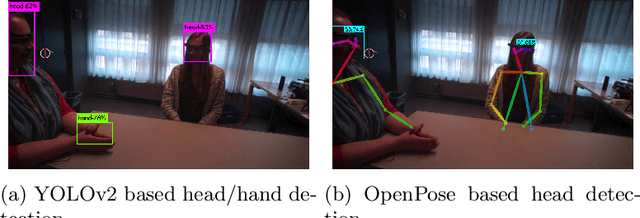Automated analysis of eye-tracker-based human-human interaction studies
Paper and Code
Jul 09, 2020



Mobile eye-tracking systems have been available for about a decade now and are becoming increasingly popular in different fields of application, including marketing, sociology, usability studies and linguistics. While the user-friendliness and ergonomics of the hardware are developing at a rapid pace, the software for the analysis of mobile eye-tracking data in some points still lacks robustness and functionality. With this paper, we investigate which state-of-the-art computer vision algorithms may be used to automate the post-analysis of mobile eye-tracking data. For the case study in this paper, we focus on mobile eye-tracker recordings made during human-human face-to-face interactions. We compared two recent publicly available frameworks (YOLOv2 and OpenPose) to relate the gaze location generated by the eye-tracker to the head and hands visible in the scene camera data. In this paper we will show that the use of this single-pipeline framework provides robust results, which are both more accurate and faster than previous work in the field. Moreover, our approach does not rely on manual interventions during this process.
 Add to Chrome
Add to Chrome Add to Firefox
Add to Firefox Add to Edge
Add to Edge